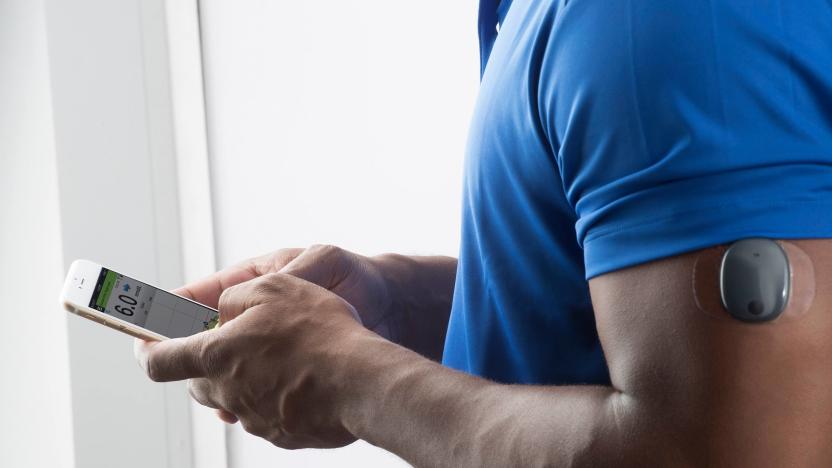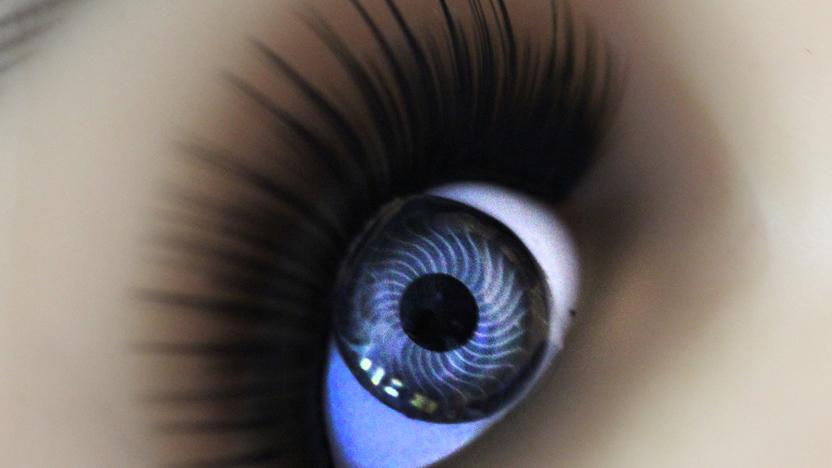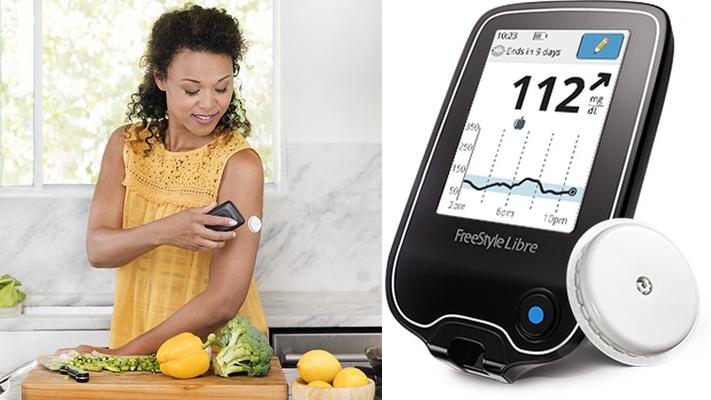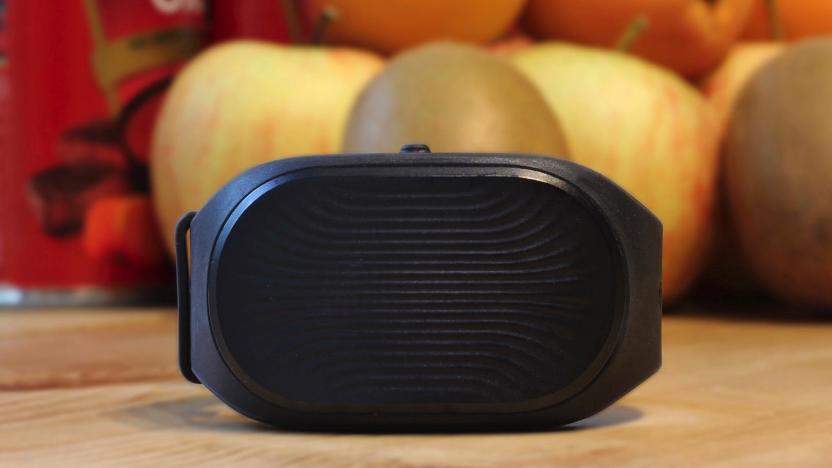BloodSugar
Latest

FDA approves implantable glucose monitor that lasts for 90 days
A year ago, the FDA implemented new, streamlined regulations for digital devices. One of them is a continuous glucose-monitoring (CGM) system the FDA just approved that sends data from an implantable sensor to a paired mobile app, letting patients see their levels on their smart device. Once it's inserted by a medical professional, it can stay in the body for up to 90 days, which is far longer than comparable external sensors that typically must be swapped out around the ten-day mark. It's the first implantable CGM approved by the agency.

Glucose-tracking smart contact lens is comfortable enough to wear
The concept of a smart contact lens has been around for a while. To date, though, they haven't been all that comfortable: they tend to have electronics built into hard substrates that make for a lens which can distort your vision, break down and otherwise cause discomfort. A team of Korean scientists might just come to the rescue. They've developed a smart lens that could help diabetics track blood glucose levels while remaining stretchable enough to be comfortable and transparent enough to preserve vision.

FDA OKs a blood sugar monitor that doesn't need fingerpricks
A fingerprick isn't just a fingerprick when you have to do it all the time to test your blood sugar levels. Thankfully, the Food and Drug Administration has approved the first continuous glucose monitoring system for adults that doesn't require you to draw blood several times a day. Abbott's FreeStyle Libre Flash Glucose Monitoring System works by inserting a tiny sensor wire below the surface of your skin. The wire needs 12 hours to start up, but once it's ready, you can simply pass a mobile reader over it to read your glucose levels. It even works for 10 days before you have to replace it.

Healbe's GoBe 2 calorie tracker teases the future of wearables
Shortly before Apple's most recent developer conference, rumors began to circulate about the next generation of its watch. Sources suggested that the device would demonstrate a form of noninvasive glucose monitoring -- a way to check blood sugar levels without breaching the skin. If possible, the Apple Watch Series 3 would become an essential product for 29 million American diabetics, overnight. It came to nothing, of course, but people are still wondering if there's a way for smartwatches to sniff our blood and tell us their findings. Thing is, there's already a watch that professes to do a similar task: the controversial Healbe GoBe.

FDA approves first automated insulin system for type 1 diabetes
For diabetes patients, managing blood sugar levels through insulin pens, needles or pumps is a necessary hassle -- but it might be far easier to handle going forward. The US Food and Drug Administration has approved the first automated insulated delivery device for type 1 diabetes, Medtronic's MiniMed 670G. The gadget uses a sensor to detect glucose levels under your skin every 5 minutes, and supplies just enough insulin to keep your blood sugar stable. While you do have to trigger a manual insulin dose after meals, you generally won't have to be as involved in the process as before.

Samsung launches S Health services: Monitors weight, blood sugar and graphs it all
Samsung mentioned its S Health app in passing during the grand unveiling of the Galaxy S III -- presumably due to the glut of similarly S-suffixed apps and services that were also unveiled. The service has now apparently launched in Samsung's homeland, alongside more details of what it'll offer. This includes a raft of metric-measuring charts, as well as the ability to connect through Bluetooth and USB to health devices like heart-rate monitors and connectivity-friendly scales. The app will record and even graph your health ups and downs, aiming to help "regulate" what you eat and gauge exactly how much you exercise. It has now launch on Samsung's App hub and will make its way to the US and five to-be-confirmed European countries soon. Let Samsung explain the "warm emotional experience" in a Google-translated release right after the break. Update: We've just received the English version of the PR, which adds that the app is now live in the UK, alongside an initial list of compatible health devices. Take a look after the break.

Glucose sensor skin implant glows when blood sugar spikes
Checking blood glucose levels used to mean a finger prick and a test-strip, but researchers at the University of Tokyo are offering a different approach: a glowing skin implant. After being injected with the 1 mm wide filament, it monitors your blood sugar by glowing when your level changes. Based on existing glowing glucose sensor technology, this hydrogel fiber is considered more accurate and stable than its predecessors, plus it requires no oxygen to function. So far, it's worked in mice for up to 140 days. Note to future human patients: don't eat a candy bar before you go to bed unless you want your arm looking like a nightlight.

Implantable blood sugar sensor could eliminate daily finger pricks
Science has been figuring out ways to sidestep those dreaded finger pricks for years now, but it's not often that we hear of such a permanent solution as this. A crew of researchers from The University of Tokyo and BEANS Research Institute are in the process of developing a newfangled blood sugar sensor that "reacts to glucose and lights up inside the body." 'Course, injecting dyes into humans in order to receive interpretable signals ain't exactly new, but hydrogel is what makes this approach unique. As the story goes, this jelly-esque material can be implanted within the body, enabling blood sugar levels to be monitored and measured externally with no pain or irritation whatsoever. In theory, a monitoring system could trigger an alert as soon as the internal levels dipped or rose beyond a predetermined extreme, giving those with diabetes a maximum amount of time to get things back in balance. There's nary a mention of when this goo will be green-lit by the FDA, but there's definitely a video explaining everything just past the break.

Researchers develop blood sugar-monitoring contacts
They're not the only ones working on contact lenses that measure blood sugar levels, but researchers at the University of Maryland's Biotechnology Institute led by Dr. Chris Geddes seem to have taken the technology further than most. They've reportedly developed special molecules that can detect glucose at very low levels which, when incorporated into a pair of contact lenses, should be adequate for detecting the amount of glucose in the wearer's tears -- which is about one tenth the amount in blood. What's more, unlike previous versions of the technology -- which required an additional device to read the results -- Geddes' new lenses will be able to simply display the results as a dot in the wearer's field of vision, changing colors to indicate low or high blood sugar levels. A lot more pleasant than the pin prick most diabetics now use to monitor their blood sugar to be sure, although as you can no doubt guess, more testing is needed before the lenses can be released into the wild.[Via Digg]







